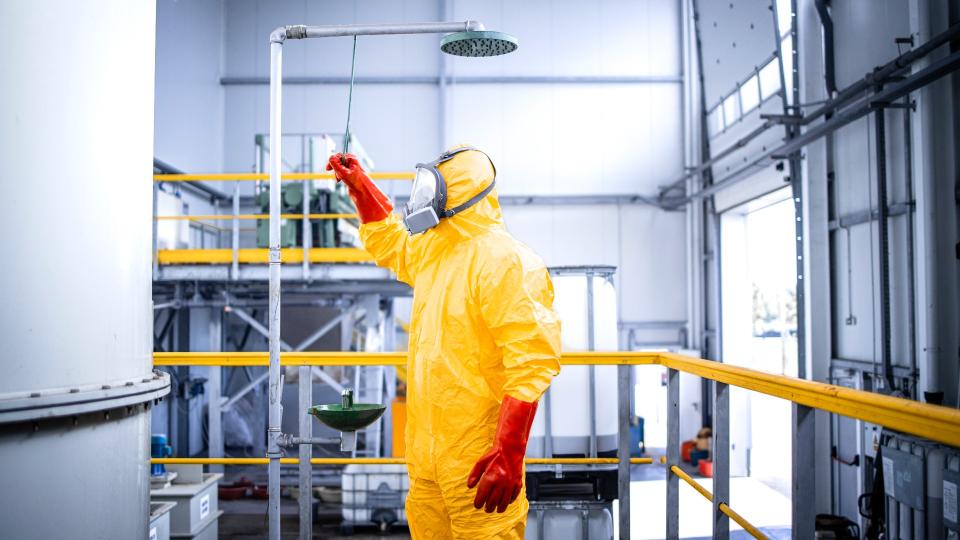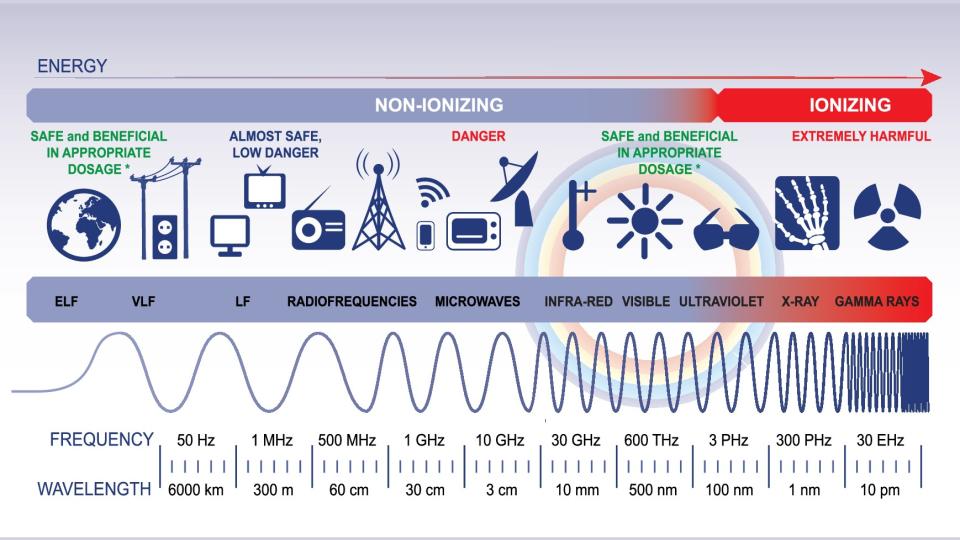How do you decontaminate objects exposed to radioactivity?

On April 26, 1986, an accident at Ukraine's Chernobyl nuclear power plant caused some 350,000 people to flee their homes as thick plumes of radioactive material spewed into the sky, according to the World Nuclear Association. Upon evacuating, they would have had to decontaminate their clothes, bodies and any items to avoid being exposed to and spreading toxic radioactive substances. Later, the surrounding region would have to be cleaned up as well.
But how do you decontaminate objects and people that have been exposed to dangerous levels of radiation? To answer that question, it's important to understand the basics of how radioactivity works.
Essentially, radioactivity means that the atoms in a given material have too much energy or mass to be stable. Over time, these unstable atoms shed their excess in the form of radiation — subatomic particles that travel at the speed of light.
Not all radiation or radioactive substances are considered contamination, and they are often not harmful at low levels. "Radioactive material is everywhere in our environment — in the soils, the air, the water, our food and our bodies," Barbara Hamrick, a certified health physicist at the University of California, Irvine Medical Center, told Live Science in an email. But "we don't consider that contamination, because we expect it to be there," she said.
Related: How radioactive is the human body?

Radiation comes in two forms: ionizing and nonionizing. Nonionizing radiation is lower in energy, and includes things like radio waves, microwaves and sunlight, which are generally not harmful in moderation (as long as you wear sunscreen for the latter). Ionizing radiation, by contrast, is energetic enough to damage your body, according to the Centers for Disease Control and Prevention. It does this by breaking the bonds holding strands of DNA together, leading to cell death, according to research published in the journal Genetics and Molecular Biology. A hefty dose of ionizing radiation — for example, from a nuclear weapon or nuclear power plant meltdown — can cause burns, blisters, nausea, hair loss and even cancer. Workers wear hazmat suits to protect against this type of radiation at a nuclear power plant.
While ionizing radiation is scary, the particles themselves can't contaminate objects (or people) and make them radioactive. "They are similar to X-rays, which pass through patients and do not leave any contamination behind,' Michael Ojovan, an associate reader in materials science and waste immobilization, told Live Science. Rather, objects become contaminated only when they get some amount of unwanted radioactive material on them.
A lot of dangerous ionizing radioactive material is transmitted in the form of dust, sometimes called nuclear fallout, which can settle onto the surface of various objects and contaminate them. This dust is easy to remove manually. In fact, many decontamination procedures involve simply wiping down the contaminated object, or washing it with soap and water. The materials used to wash off the contamination — for instance wipes, water and soap — then become waste that has to be stored in silos made of reinforced concrete, occasionally buried deep underground, according to the United States Nuclear Regulatory Commission.
But things can get a little more intense if you're dealing with higher doses of radioactive material. "Heavily contaminated objects are decontaminated using strong chemicals," such as nitric acid and permanganate, Ojovan said. These chemicals can bind to radioactive metals in a process called chelation and render them inert, according to the Environmental Protection Agency.
At Chernobyl, liquidators helped filter and clean the water around the nuclear reactor using chemical cleaning methods. They also constructed the thick concrete and lead "sarcophagus" around the reactor to help prevent more radioactive material from leaking into the ground or water supply.

People exposed to high levels of ionizing radiation should take off their outer layers of clothing, which can remove up to 90% of radioactive material, and then shower with soap and water or wipe themselves down, according to ready.gov, a U.S. disaster preparedness site. And they definitely shouldn't condition their hair, as at the microscopic level hair looks like a bristly pine cone; conditioner smooths down these bristles, which could trap radioactive dust within a person's hair.
Related mysteries
—Is it safe to visit Chernobyl?
—Is it safe to stand in front of microwave ovens?
—Is the radiation from airport body scanners dangerous?
If an object can't be decontaminated with water or chemical treatments, it's probably best to put it in the storage silo; many hazardous radioactive materials take an extremely long time to peter out on their own. As a radioactive substance emits particles, it becomes slightly less energetic; the amount of time it takes to lose half of its energy is called its half-life. After 10 half-lives, it will emit less than 0.5% of the original radiation, at which point it may be considered safe in many instances, according to Hamrick.
A handful of hazardous radioactive substances, like iodine-131, have short half-lives of just a few days. However, many others have extraordinarily long half-lives. Uranium-235, which is commonly used in nuclear power plants, has a half-life of about 710 million years, according to the Environmental Protection Agency. If you got uranium-235 dust all over your favorite shirt, you'd have to wait over 7 billion years to get it back.
Japan is currently preparing to release 500 olympic swimming pools' worth of water that was tainted by the Fukushima nuclear plant meltdown into the Pacific Ocean. The water has been treated, filtered and diluted, but still contains trace amounts of radioactive tritium, according to Reuters. Tritium has a half-life of 12.3 years, so the water would take 123 years to be considered non-radioactive. But in a controversial move, Japanese officials, along with other experts from around the world, hope that the ocean will dilute the water enough to render it completely harmless.

 Yahoo Autos
Yahoo Autos 